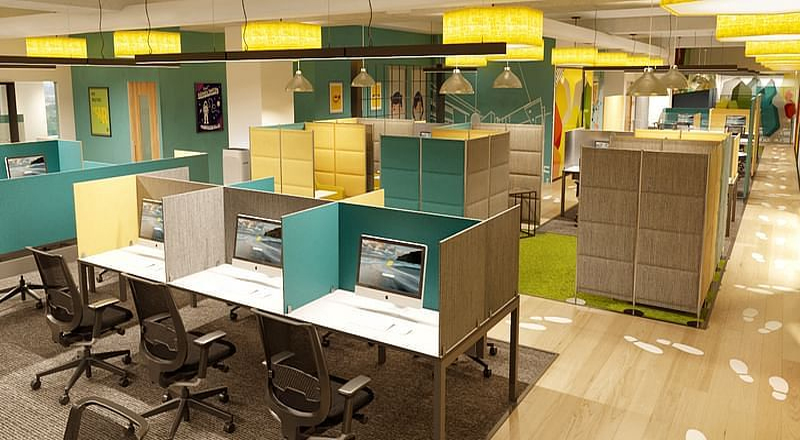| Rebooting the workspace: Actual Vs Virtual
The pandemic has created an opportunity for the organizations of all sizes to embrace a connected and digital society. An even more dramatic shift is underway as how we work and learn has become distributed, and the home is now the new office and the new classroom. A company’s digital transformation strategy has never been more critical than it is today. We see technology reshaping global businesses, society and our communities. A survey says, most of the software companies are talking about virtual office or Work from Home during this health emergency, but a question arises, will it continue forever? The Obvious answer is absolutely not. However, technology helps in planning and executing the new-age workplace which enables flexibility in terms of the choice and ability to book and sit next to the person of your choice. The survey unfolds that the enterprises who were already more digital going into the crisis are doing better and will continue to thrive going into 2021.
At a fundamental level it has transformed the way we work. The concept of the workplace itself has evolved so quickly that even the most traditional firms have had to adapt on the fly in order to survive. More and more people in the coronavirus era are suffering from a phenomenon known as ‘Zoom fatigue’. As more and more people vent about video chat exhaustion, psychologists warn the condition could cause severe burnout and even depression. The exhaustion that comes with participating in video conferences, whether it be on Zoom, Google Meet, or any other application. The fact is ‘there is an aspect to communicating remotely—with video on—which has long been known to be more mentally taxing. Resulted, our brain has to make an extra effort to compensate for all those aspects of communication we lack.
Secondly, the use of digital tools is imperative today. And while workers often fear being replaced by automated systems, workforces in many fields have learned during this crisis. It is an opportunity for the software companies to show their capabilities, maybe for a shorter time helping their businesses to grow during the pandemics. Many feel that this growth will be back to new normal . |
2020 has been a year of uncertainties – but also possibilities. Different organizations in different industries have prioritized the impact of the trends on them as being higher or lower, but when we look across industries and across geographies and across these trends, we think that these are the most impactful trends that organizations are going to face over the next five years. As COVID continues to push organizations to transform faster than ever before, most of the companies have pivoted their strategy to digital events and webinars and created the silver linings from the COVID-19 global pandemic. One thing is clear, technology has never been more central than it is right now. For many, digital three-year plans got done in three months. We are having a glimpse of the future, and the organizations that are investing into that future have the advantage.
The tech companies transformed billions of lives through their innovations by providing convenient and enhanced business efficiencies. At the same time, digital transformation will only accelerate from here with the combination of massive computing power, 5G and AI. It is like a machine, and the fuel for that machine is data. As everything in the physical world becomes intelligent and connected, the amount and relevance of data will continue to explode. These innovations together are the fourth industrial evolution. And it will require all of us to reimagine every aspect of what we do. The data era is here. To win, organizations need to accelerate the digital transformation. 5G is the digital fabric that allows us to extend the cloud to the mobile edge.





